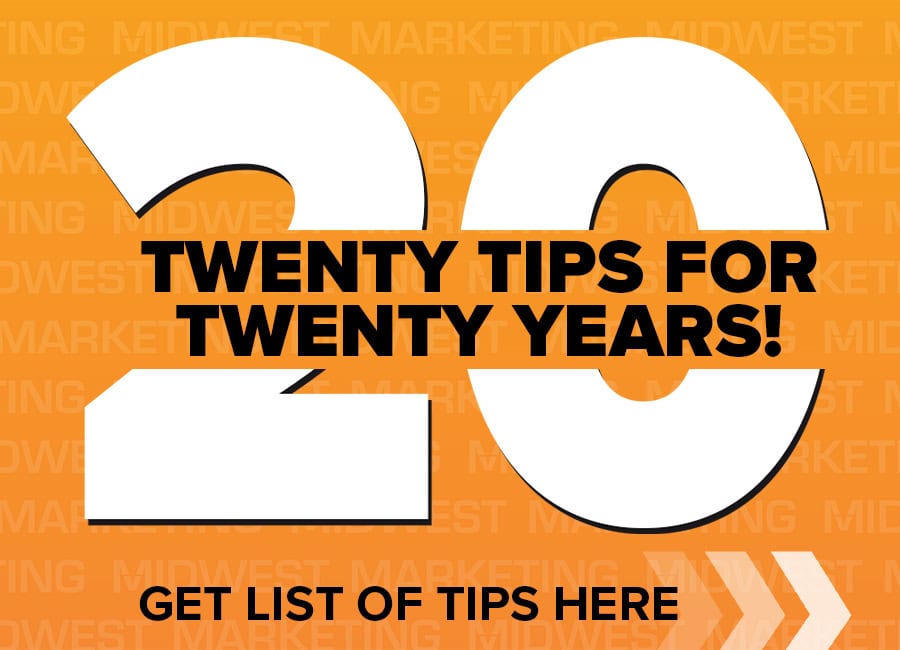In a highly tourism-driven region like the Black Hills, standing out requires a marketing strategy that attracts and engages travelers at every touchpoint. It demands captivating storytelling, creating immersive experiences, and engaging with potential visitors on multiple platforms.
With the tourism season right around the corner, we thought it would be the perfect time to share some tried and true tactics so you can welcome more visitors to your location than ever before!
Although storytelling is a crucial element of every marketing strategy across all industries, it is the key component of a successful tourism marketing strategy. It helps to create an emotional connection with potential visitors and gives them the opportunity to see how your destination fits into their own story.
When deciding your destination’s story, think of what makes you unique and who your target audience is. Also, consider your guests’ pain points and how visiting your location helps to alleviate them. Just remember, authenticity is at the heart of effective storytelling, so make sure that your story allows viewers a genuine look at your destination and the experience that it provides.
Here are some tips for creating and sharing your story:
- Create a high-quality video tour that showcases your business, featuring real employees and, if possible, real customers.
- Share testimonials and user-generated content from your previous guests. One way to gather user-generated content is by creating a campaign around a hashtag that is relevant to your destination and sharing it through social media, print materials around the property, email, and SMS marketing. Contests that include customers sharing photos from your destination are also great for acquiring user-generated content that will resonate with viewers.
- Use Instagram Stories, TikTok, and other video platforms to share bite-sized pieces of content, including behind-the-scenes shots of your attraction, fun facts about your location, and authentic interactions between employees and guests.
- Use blog posts for deep dives into the history and culture of your attraction and share snippets through social media to further drive traffic to your website.
By integrating traditional and digital marketing, your tourism business can ensure a seamless customer journey, reaching travelers where they are and inspiring them to take action. Some great ways to do this are:
- Feature QR codes in brochures, magazines, and on billboards that direct those who scan to your website, preferably to a high-quality video or landing page that showcases your destination.
- Add social media handles and hashtags to printed materials, allowing visitors to not only check out your destination, but also encouraging them to share their own experiences online. (Again, this is an effective way to gather some user-generated content!)
- Run TV and radio ads that promote an interactive social media campaign, such as a contest.
- Use geofencing to serve online ads to travelers who have been near your physical billboards or another key location.
- Utilize email and SMS marketing to follow up with guests and offer discounts for future visits and links to your review platforms.
Today’s consumers crave tailored experiences that meet their unique needs. Here are some quick, easy personalized marketing tips that will make all the difference in engaging your audience and driving conversions:
- Segment your email list. Not all customers are the same, so sending one-size-fits-all emails won’t drive results in the same way that personalization will. Divide your list in ways that make the most sense for your business, whether it’s by demographics, purchasing behavior, or interests. Then, create targeted email campaigns that speak directly to each group.
- Use dynamic content when available to customize your content based on user data. By doing so, you can add personalized greetings to your emails and suggest products based on past purchases, for example, which make your messages more relevant for the recipient.
- Have authentic social media interactions by personally responding to comments and messages, using the customer’s name whenever possible.
- Create individual landing pages for each of your audience segments to offer a personalized website experience based on a user’s location, interests, or demographics.
Most travelers start their journey online, with many using their phones to research destinations and compare pricing. This is a trend that doesn’t seem to be going anywhere anytime soon, making it crucial that you ensure your business’s website is both visible in relevant search results and easy to navigate on mobile devices. Here are some items you don’t want to miss when increasing the visibility and user-friendliness of your website:
- Use location-based keywords in your search engine optimization (SEO) strategy, such as “things to do in Rapid City,” “best restaurants in the Black Hills,” and “family-friendly attractions near Mount Rushmore.”
- Test your website’s load speed and make sure it loads in three seconds or less, the average amount of time that research shows users give a website to load before they leave. Complete tasks such as compressing images, minimizing HTTP requests, and using a CDN to cut your site’s load time.
- Provide users with a responsive website that uses a mobile-responsive design that adapts to all screen sizes and allows visitors to complete the purchasing or booking journey as easily as they would on a desktop computer.

Harness the power of paid ad platforms such as Google, Meta, and TikTok to target specific demographics and travel interests. Perfect your strategy with these tips:
- Segment audiences based on interest, age, and travel habits to create and deliver a personalized message just for them. When setting up your ads, create separate campaigns or ad groups for each of your audiences.
- Highlight seasonal events or limited time offers to create a sense of urgency and drive conversions.
- Analyze your current and past customer data to determine the best locations to target your ads. Remember, the more areas that you target, the more expensive it will be to make an impact with your ads, so you really want to make sure you are only targeting regions that show the most interest in visiting your location.
- Set up a remarketing campaign to keep your destination top of mind. With remarketing, you can target your ads to those who have visited your website or previously engaged with your ads. Since travelers often visit multiple websites before booking, remarketing is a great way to ensure your business doesn’t get forgotten.
Ready to Put Your Destination on the Map? 📍
Whether you need help promoting a charming bed and breakfast or a bustling family attraction, our marketing professionals can help you create unforgettable experiences that keep visitors coming back for more. Contact us today to get started!






